Confirmation emails, shipping updates, thank-you emails, notifications… You have to send em’. Heck, in today’s world, having those emails automated is par for the course.
But could it be that what email marketers call “transactional emails” actually represent a wealth of untapped opportunity for your business?
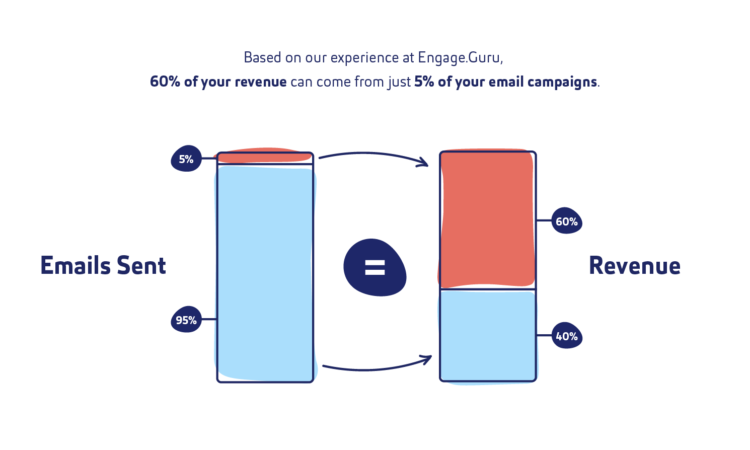
Based on our experience at Engage.Guru, 60% of your revenue can come from just 5% of your email campaigns. And according to Campaign Monitor, transactional emails generate 8 times more opens and clicks and 6 times more revenue than any other types of emails.
As it turns out, your audience cares about getting transactional notifications… they care a lot.
The question is, could you use that fact to your marketing advantage? Could you use transactional emails for more than just… well, transactions?
Of course, you could!
Here are 3 ways to do it (with real-life examples).
1. Monetize Transactional Emails
The first way that you can spice up your transactional emails is to monetize them.
Now I know what you’re thinking: many transactional emails exist because someone just purchased a product from you — order confirmation or shipping update emails. So isn’t it a little bit pushy to try and get them to buy more from you again?
Well, not necessarily.
So that you don’t overdo it, we recommend that you use only 20% of your transactional emails to try and sell to your audience.
And ultimately, it all depends on how you pitch the customer more products. Consider, for example, how Dollar Shave Club tries to upsell members before they ship their next package.
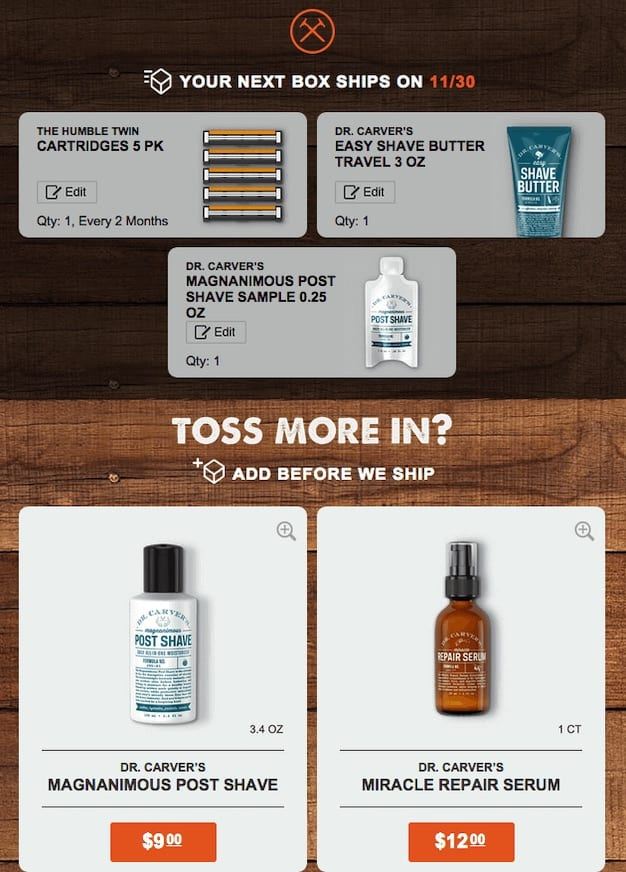
Or how Crate&Barrel recommends products right within the order confirmation email…

Another dead-simple application of monetizing your transactional emails is using an abandoned cart email…
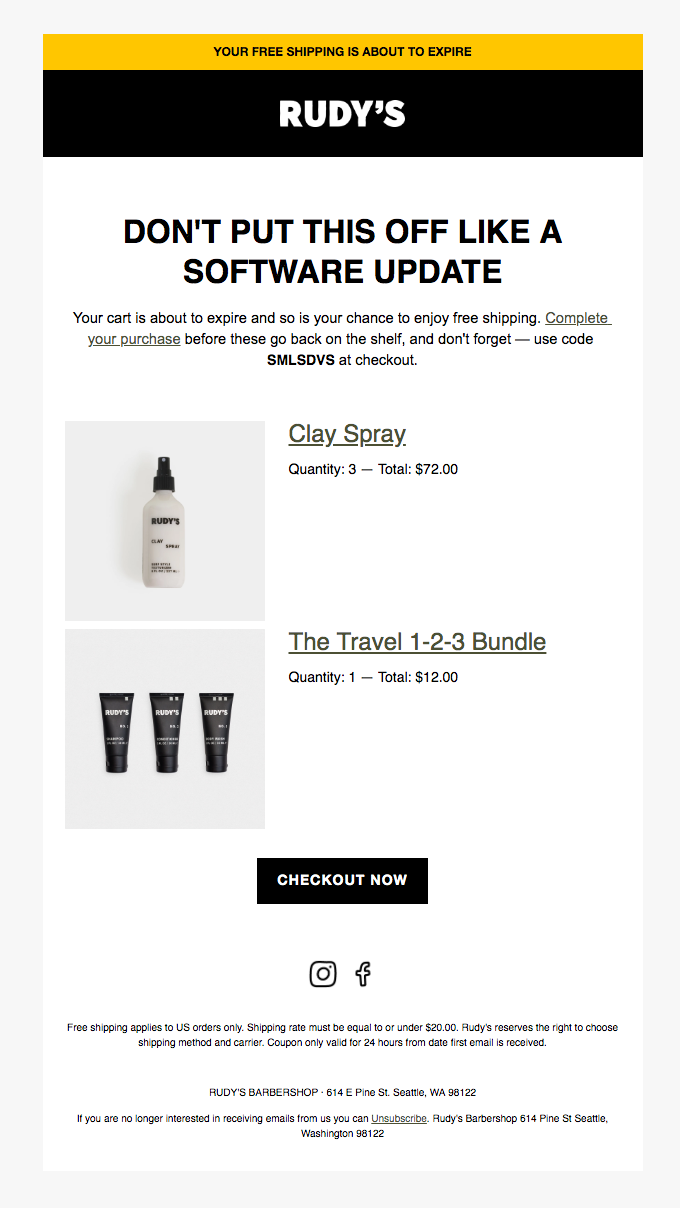
…and a browse abandonment email…
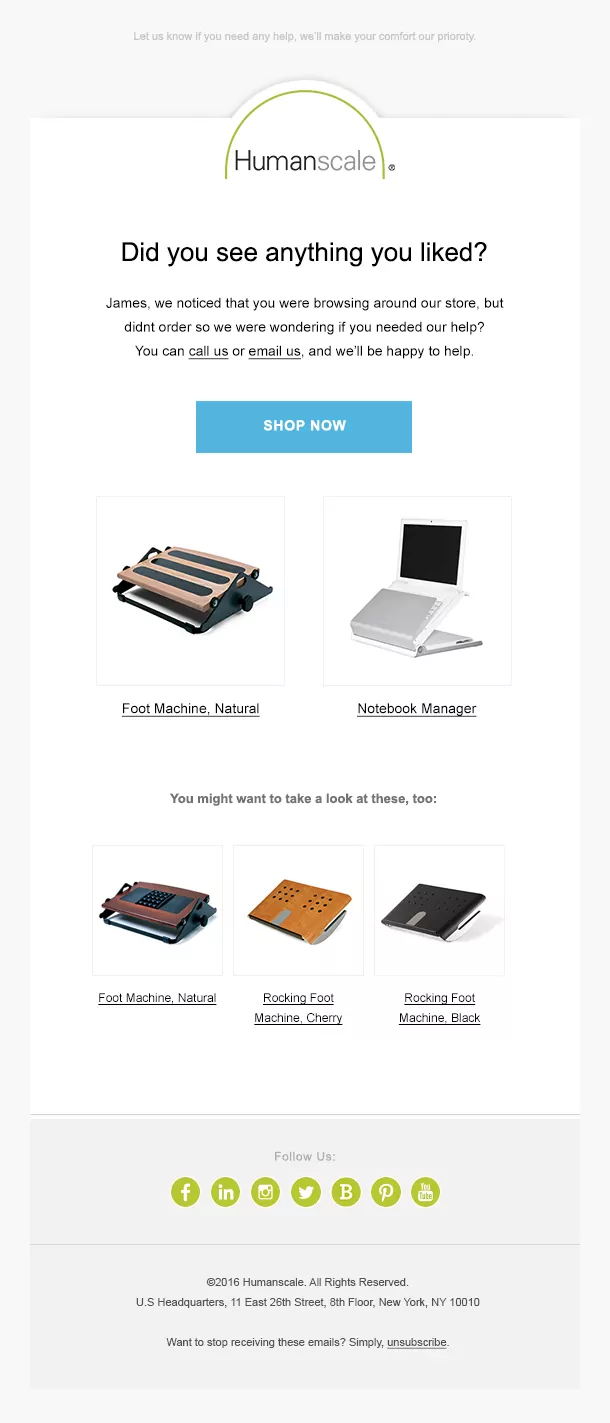
Statistically speaking, abandonment emails are some of the most profitable transactional emails in existence today. Use them to recapture lost sales and to recommend products that might be a fit for the potential customer.
One final way to monetize your transactional emails is to recommend products within a refund confirmation email. Just because someone returned one of your products doesn’t mean they’re not interested in any of your products.
Consider this email from Gilt Groupe where they return the buyer’s funds without question…
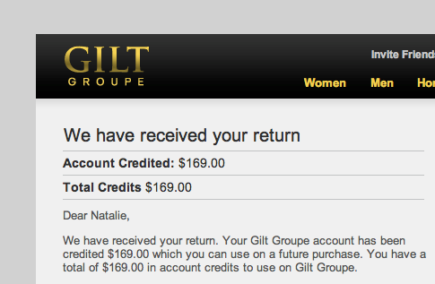
… but they also, on the side of the email, have you a “You make like” section…

Natalie Nagele, the author at Postmark who received these emails, said…
“You may argue that a Return email shouldn’t contain any sales pitches. Most days I’m inclined to agree, but in this case I think the ads on the side of the email for items that might interest me are perfect. My return did not give me my money back, instead I received a credit towards a future purchase. What better time to show me something else I might want? I like to spend my credit soon since I’ve already paid for it, and showing me these in my email is a great way to get me there.”
And she’s right — especially if your business refunds customers in the form of store credit, you should offer some other recommended products for the person to browse through right inside of your refund confirmation email. And you might still do that if you have a cashback guarantee — remember, just because someone returned one purchase doesn’t mean they don’t want to buy in the future.
2. Create an Ongoing Customer Relationship
Since so many people open transactional emails (8 times more than other types of emails), they are a great opportunity to build a relationship with your customers.
By definition, transactional emails are intended for people who’ve either purchased from you or come close to purchasing, and those are just the people you want to build a relationship with.
After all, it typically costs five times more to acquire a new customer than it does to sell to an existing customer. And on average, loyal customers are worth five times more than their first purchase.
Since it’s definitely in your business’ best interest to build a healthy, long-term relationship with your customers, why not use transactional emails to do that?
Perhaps the best, most renowned example of this comes from CD Baby…
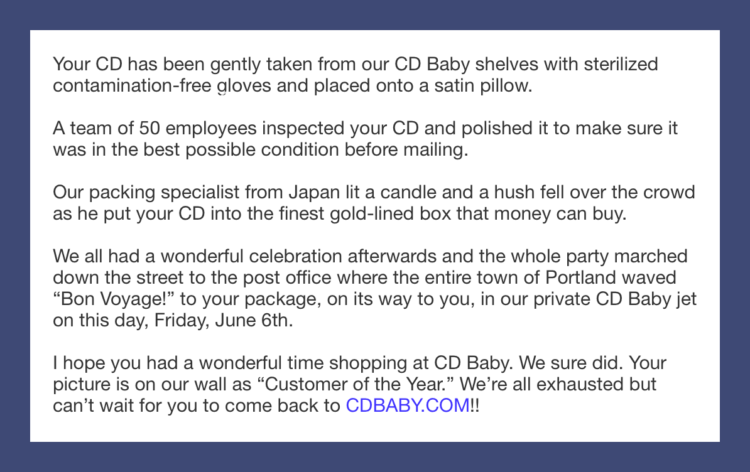
Talk about making the customer feel special and appreciated.
Another great way to build an ongoing commitment with your customers is to ask them to create a membership or “join your secret club” for some sort of bonus or incentive.
After purchasing from Nike in our Nike Email Teardown, for example, we received an email that tried to get us to sign up for NikePlus…

You can do something similar if you have a membership program (just add some bonus or incentive if you want to get a higher conversion rate).
Or, like Starbucks, you can encourage customers to purchase again by offering an exclusive discount…
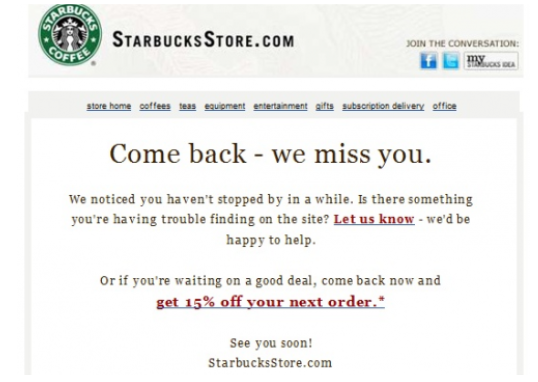
Ultimately, the goal is to give your customers a chance to get to know your brand a little bit better, to feel like they’re connected with your brand, and to feel like your brand values them as a customer.
76% of consumers say they would purchase from a brand they feel connected to over a competitor and 57% say that they will likely increase how much they spend with a brand they feel connected to.
Never forget the value of building a long-term connection with your customers, especially within your transactional emails. That’s a great place to offer exclusive discounts, tell your brand story, share your mission, recommend more products, or get people signed up for your “secret club.”
3. Learn About Your Target Market
The more you know about your target market, the better you can serve them — you can create more enticing emails, product offers, and you can segment your list appropriately.
And transactional emails are a great place to learn more about your subscribers and customers.
Perhaps the two best ways to do that are by asking your audience to fill out a quick-and-easy survey or asking them to leave a product review.
We love this post-purchase email from Warby Parker which asks the customer to take their quick survey. It’s polite, grateful, and to-the-point.

Here’s another example from BarkBox…
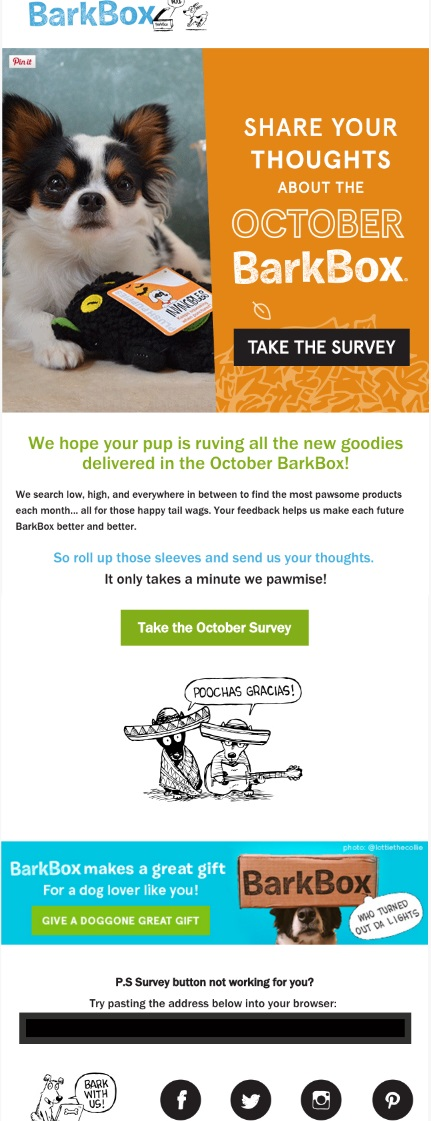
Notice how this email tells the reader “it only takes a minute”? We highly recommend telling the person how long the survey is going to take them so they know what they’re getting into (and anything more than 5 minutes probably won’t get a great conversion rate — 60 seconds or less is ideal).
The other option is to use your transactional emails to ask for a review…
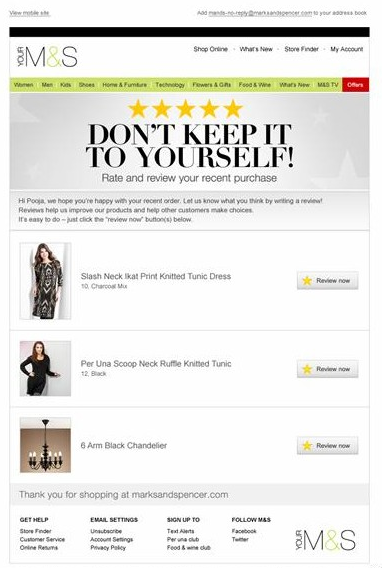
Just make sure that when you send your product review email, the customer has had enough time to test out your product and get a feel for what they think of it. If you sell bedding, for instance, then you probably want to wait at least a few weeks to ask customers for a review. If you sell coffee, then a week after the delivery date is probably fine.
And if you really want to increase the conversion rate of your survey emails, then you can add some sort of incentive (“Get 15% off your next purchase if you take this survey!”). The only caveats would be to not use those sort of incentives when asking for a public review or testimonial — that goes directly against the FTCs guidelines and could result in your business getting fined — and to avoid offering too many discounts which can teach your audience to only buy when there’s a sale.
Conclusion
You have to send transactional emails for your business, anyways, so why not make the most of them?
You can use transactional emails to increase revenue, creating an ongoing and committed relationship with your customers, or even learn about what your target market does and doesn’t like.
All that’s left is to determine how you’re going to make the most of your transactional emails and then to get started, track your results, and iterate as needed.
Let us know how it goes!
